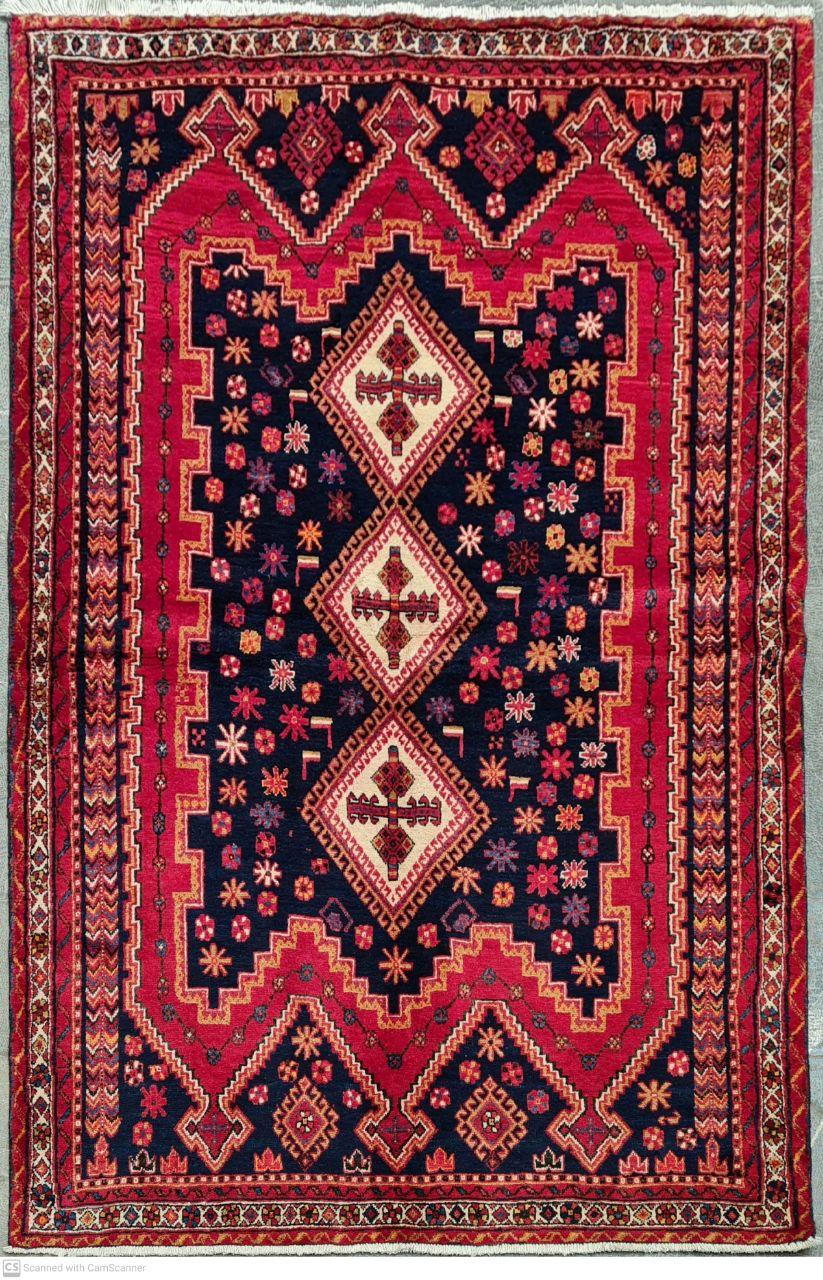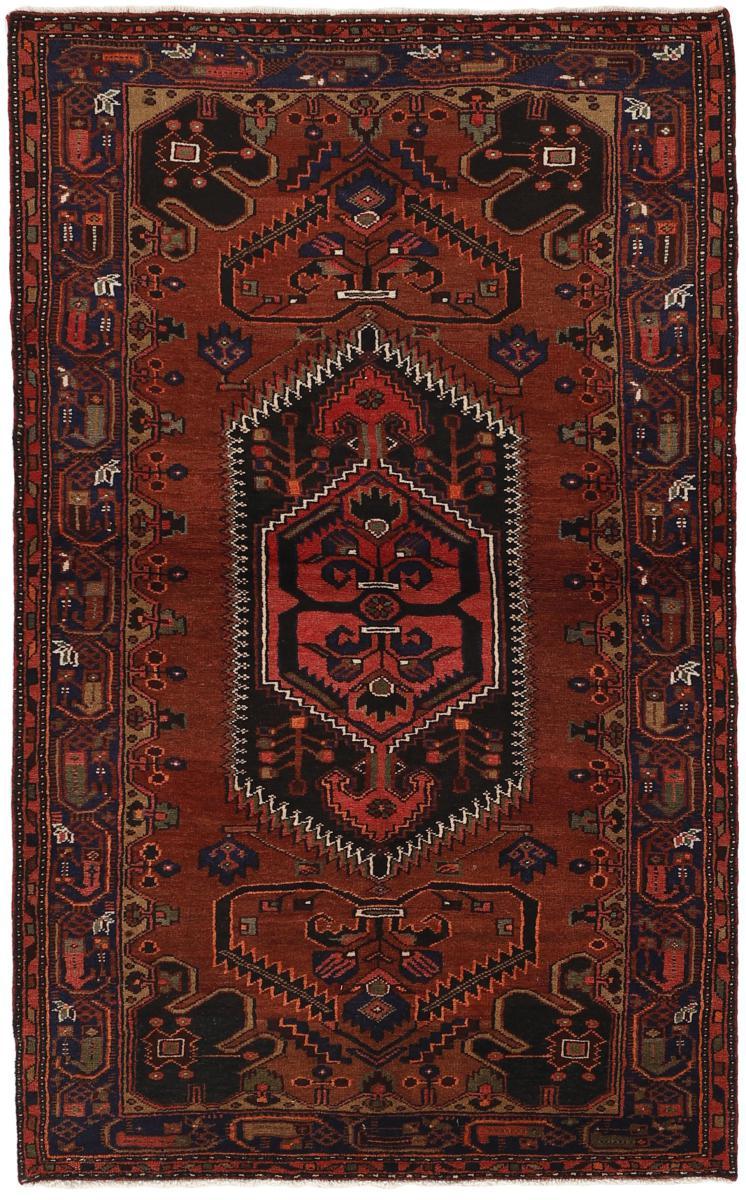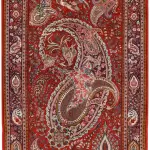Introducing Kalardasht handwoven carpet and its features
The Kalardasht carpet is one of the carpets that has remained abandoned and unfamiliar among the buyers and lovers of Iranian carpets, and what is known about the history of carpet weaving in this region mostly consists of statements that have been passed down from chest to chest. In this article, we are going to introduce you to the characteristics of Kalardasht carpet as one of the authentic Iranian carpets.
Background of carpet weaving in Kalardasht
In general, in the north of the country, due to people's employment in agriculture and the environment not being favorable for carpet weaving, the residents of this area are not carpet weavers. Basically, carpet weaving began in history in areas that had a suitable environment such as abundant pastures for raising goats and sheep, and on the other hand, due to the presence of cold and dry weather, the possibility of farming in those areas is non-existent or limited. The oldest document that mentions carpet weaving in Mazandaran is after the fourth century in the works of Al-Balad Qazvini: "The people of Tabaristan used to raise silkworms and for this reason a lot of silk was exported from there. Woolen fabrics, carpets, all kinds of clothes and handkerchiefs were also woven there.
Kalardasht, the only active area of carpet weaving in the north of the country
Currently, in Mazandaran region, the only region that deals with carpet weaving and has a history of several hundred years in this work and has its own motifs, is Kalardasht region. Kalardasht carpet weavers are generally Kurds who moved to this area. At present, the main residents of Klardasht are divided into two groups, "Gil" and "Khwaje Vand", and Khwaje Vand are the residents of the region's carpet weavers. Carpet weaving is hereditary among these tribes, and the Gils do not have a carpet weaving culture, and only those of them have learned carpet weaving who are mixed with the Khajah and Vand tribes. Gil relatives are native residents of Kalardasht and Khajevandhas are immigrant residents of the region. In the book "Klardasht, Geography, History, Culture", Ali Malekpour says about the forced migration to the Klardasht region: "After the Mongol attack, one of the prominent historical events in Klardasht was the emergence of a wave of new migrations, which later became the source of important social and political developments in became the region. This case is related to the forced migration of tribes from Lor tribes from western Iran to Kalardasht and its neighboring areas. These groups in Kalardasht are generally called "Khwaje Vand" and they are also called "Il" by the people based on their ethnic and tribal identity. The term Ail is used against "Gil" or Gilak, who are the natives of Klardasht.
The famous carpet of Tabaristan
According to all the mentioned materials, the history of carpet weaving in Kalardasht can be found in the area of the famous and exemplary carpet of Tabaristan. Just like the famous Tabari carpet, which the historians of the 3rd and 4th centuries like Qazvini mentioned well, and it was among the exquisite and exported carpets, but definitely in the expansion and continuation of the Kalardasht carpet, Kurdish clans played an effective role, and as we said, these immigrants promoted There was a carpet weaving culture in Kalardasht and they moved this culture with them to the region. The presence of evergreen pastures, animal husbandry economy and carpet weaving culture, that is, a good geography for the continuation of a transferred cultural phenomenon, has caused carpet weaving to come to life, expand and continue to exist in this region. In general, it can be said that in Kalardasht, women are the main weavers of handwoven carpets, and Kalardashti men are engaged in side activities of this special profession, such as providing raw materials, dyeing, marketing and sales. A significant number of Kalardashti households make a living only through carpet weaving. In 1376, a total of 3,700 people in the form of 1,800 carpet weavers were working in this handicraft industry in Kalardasht region. At the level of Mazandaran province, the Kalardashti plan is followed in carpet weaving.
Kalardasht handwoven carpet, an export product
In addition to local buyers and sales in some other cities, Kalardasht hand-woven carpets are mainly exported abroad. The countries of Germany, Austria, France, Italy, Canada, as well as the emirates of the Persian Gulf, are considered to be the main customers of Kalardasht carpets. Kalardasht carpet is exported to these countries through the Central Union of Mazandaran Carpet Cooperatives and is sold and known as "Klardasht handwoven carpet" in each of the countries. Carpet weaving is considered to be the main handicraft industry of Kalardasht. But in addition to this, handicrafts such as weaving, felting, potting, embroidery, weaving socks and woolen gloves are also common in the region, which are less important in comparison with the volume of production and employment in carpet weaving, and their popularity and prosperity have decreased in recent years. Is.
Women of Kalardasht, weavers of handwoven carpets
From dawn to dusk in the desert, on two legs, behind oxen and plows, splitting the earth, hoeing, sowing seeds, looking for running water and irrigating crops, walking and haying after herds of cattle, and the summary of the effort. Working and trying and after all this effort and bearing the weight of the body on the legs, you need a place to rest, or you should sit or lie down and rest. In the culture of rural and nomadic societies and even our traditional urban societies, stools and chairs have no place, and carpets and underlays solve this problem in various ways, and in the system of division of duties within the family, one of the duties of the housewife is to provide the comforts of the household. including the preparation of the same underlays and carpets for the four walls where the people of the house rest after the daily hard work. The main stages of making and weaving these floor coverings are done by women and in the same houses where they live, and the lady of the house does this work when she is free from daily busyness, and all the stages of preparing the raw materials, tools and its texture, except for Chinese wool, It is done by women and girls.

Features of Kalardasht handwoven carpet
Patterns and Designs
The design and map of Klardasht carpets is included in the group of Iliati designs. In such designs, weavers are mostly inspired by the images of flowers and leaves, animals and birds that they have constant contact with in nature, or their tribal objects and totems that belong to them, and almost all of these designs are woven in geometric fields and broken branches. These carpets and rugs are often without plans and are woven mentally, and of course, what has made the Klardasht carpet famous is the mind of its weavers, and the fact that we often cannot find two similar designs in the Klardasht carpet. The weavers of this region, as a result of experience and repeated weaving of the same design, weave the carpet without the need of a map, and sometimes, according to their own taste, they make changes to the map of their ancestors, and with the evolution of these patterns, they create new designs, and of course It is obvious that due to the lack of use of the map, mistakes will be made in the images and texture, and the carpets they weave will not turn out to be completely symmetrical.
Mental motifs of Kalardasht carpet
In many cases, the motifs used in these weaves are based solely on the worldview and natural science and the beliefs of the people of this country; And these motifs have sometimes caused cultural differentiation and created specialization compared to similar regions. Sometimes a single pattern is seen in the background and text or margin, and sometimes the variety of patterns dazzles the eyes of every viewer. However, the weavers have learned these motifs in a traditional and narrative way and by practicing and repeating without knowing the subtleties of mathematics and geometrical details, they have made the patterns symmetrical and balanced. There is a square in the text, which is formed by connecting the angles within the cross-shaped square, creating four equilateral triangles. And sometimes they get the center of a circle at the intersection of crossed lines, draw a circle and display geometric or plant or animal motifs in a decorative way inside the circle. In some motifs, alliteration is clearly visible. In some cases, the central and main part is divided into several rhombuses, and inside the rhombus, different geometric patterns are formed. Animals with geometric shapes are shown in these rhombuses.
Color is the most important reason for the fame of Kalardasht carpet
But another reason for the desirability of Klardasht carpet is the very high quality of its color. In the preparation of paint, in addition to chemicals, they still use common plant materials as in the past. Since the residents of Klardasht are cattle breeders and farmers, they produce their own raw materials and work tools. That is, they also do the spinning of wool themselves. Although in the last few years there was a spinning and dyeing factory in Klardasht, where the picked wool from the sheep was taken directly there and ready yarn was delivered, but unfortunately the factories stopped working after a while. Currently, Kalardashti carpet weavers are working in the form of a trade union under the name of West Mazandaran Handmade Carpet Producers Cooperative, centered in Kalardasht. Kalardasht carpet is exported to other countries through the Central Union of Mazandaran Carpet Cooperatives and is sold under the name Kalardasht handwoven carpet. The colors in Kalardasht carpets are often contrasting and special, sometimes among the colors, red is considered to be a sign of prosperity and happiness, and it is considered as henna and on the forehead as a sign of luck, and green is the same color as red, the color of luck and astrology. They calculate and use black color in various ways. They weave it, wear it and consider it strong and characterful.
Raw material
Due to the geographical location and suitable climatic conditions, the wools produced in the Kalardasht region are considered among the best wools in the country. Spring wool, which is the best type of wool, is used for carpet weaving.
Tools and equipment
The Kalardasht carpet loom is of a standing type, and since it is drawn in the Persian way, it does not have a pull down, and the weaver moves his bench to the upper parts of the dar along with the progress of the weaving work, so that sometimes he is engaged in weaving at a height of 2 meters from the ground. It is woven. Other carpet weaving tools include comb and scissors.
Kalardasht handmade carpet dimensions
• A 6-meter carpet, which is called 3-meter carpet in the local language, means the length of the carpet is 3 meters and the width of the carpet is 2 meters.
• A 12-meter carpet, which is called 4-meter carpet in the local language, means the length of the carpet is 4 meters and the width of the carpet is 3 meters.
• A 9-meter carpet, which is called 2.5 meters in local language, means the length of the carpet is 2.5 meters and its width is 1.5 meters.
Qali Zare and Charak, which is known as Panch Charak. Its size is 1.25 and its width is 90 cm.
• 1.5 meter carpet which is known as six quarters.
• The side rug, which is called "laksh" in the local language. The size of lacquers is from 80 cm to 3 meters.
• Pastik or back which is woven in the size of 60 x 90 cm.
• Darg that is woven in different sizes from 50 cm wide to 100 cm long.
• A 2 x 2 carpet whose width is 130 cm and its length is 220 cm.
Final word
Kalardasht carpet is one of the types of hand-woven and authentic Iranian carpets, which are very famous in the foreign markets of hand-woven carpets due to their special coloring and often geometrical designs. In addition, the use of hand-spun and high-quality local wool in the carpet texture, and as a result, the high quality of Kalardasht carpets, has caused the hand-woven carpets of this region to have many fans inside and outside the country. If you are interested in carpets with a quiet and geometric design, in which harmony and maturity of color can be clearly seen, be sure to take a look at the beautiful carpets of Klardasht.
You can inquire about Buying Handwoven Carpets , Buying Handwoven Kilim and Mats ,and Buying Handwoven Pictorial Rug Tableaus online from the Hoveida Carpet Store and register all your orders and Wherever you are in the world, deliver it to the desired address in less than 4 working days.
If you are interested in reading other articles in the field of Handwoven carpets or Handwoven Pictorial Rug Tableaus , please refer to Hoveida Carpet Commercial .
Leave a comment
Your email address will not be published. Required fields are marked *












